How to Grow Alliums in Your Garden
Alliums aka ornamental onions are one of the most interesting flowers you’ll ever see.
When fall rolls around, I start thinking about alliums because it’s the best time to plant these beauties.
Along with tulips, lilacs, and peonies, alliums are worth the extra effort and patience it takes to plant in them in the fall so you can enjoy their glorious blooms in the Spring and Summer.
If you’re wondering whether alliums will suit your garden, let me tell you that this flower will add intrigue, height, and rich color to your yard.
Plus, you can probably find the perfect place to put them, too, if you get a little creative!
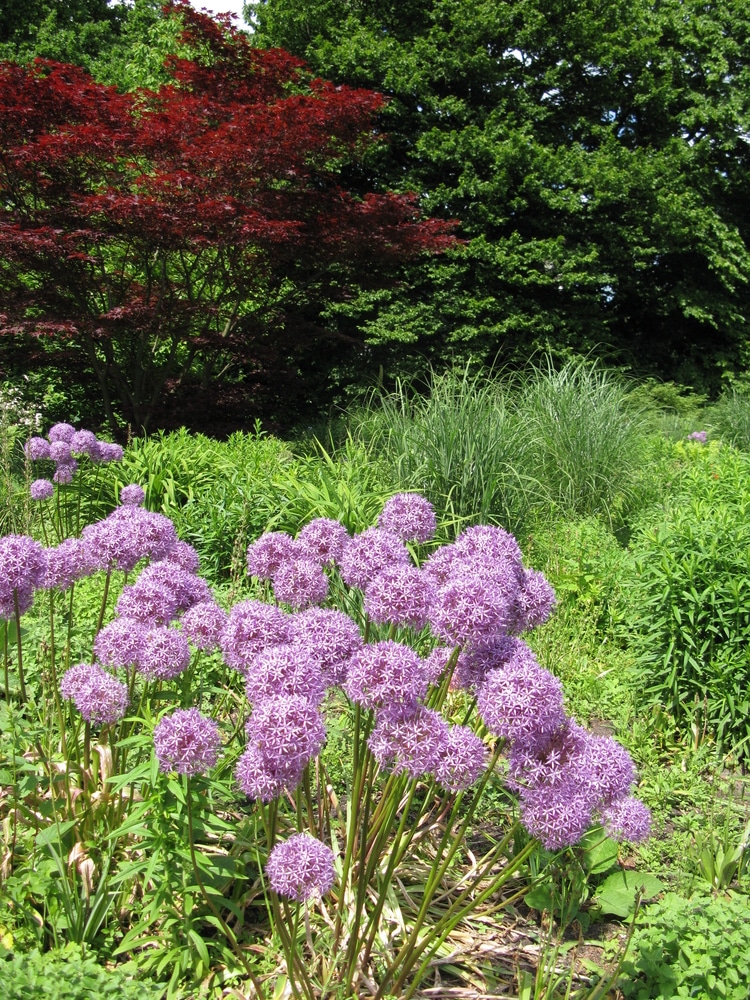
(This post may contain affiliate links).
Why to Plant Alliums in the Garden
There are plenty of reasons to plant alliums!
Firstly, the allium is a low-maintenance perennial with a long blooming time, so it can help fill in sparse areas of your garden, especially during those weeks between spring and summer when some of your flowers have stopped blooming, and others are not quite ready to bloom.
This is where alliums will prove their value; they’ll work overtime for you so that you’re not staring into a boring garden.
Secondly, this flowering plant produces a sweet scent, so if you enjoy growing a fragrant garden, alliums are an excellent option.
Another reason to grow them is that they repel rabbits and deer, so planting them in your garden might help keep these animals away from your more susceptible plants.
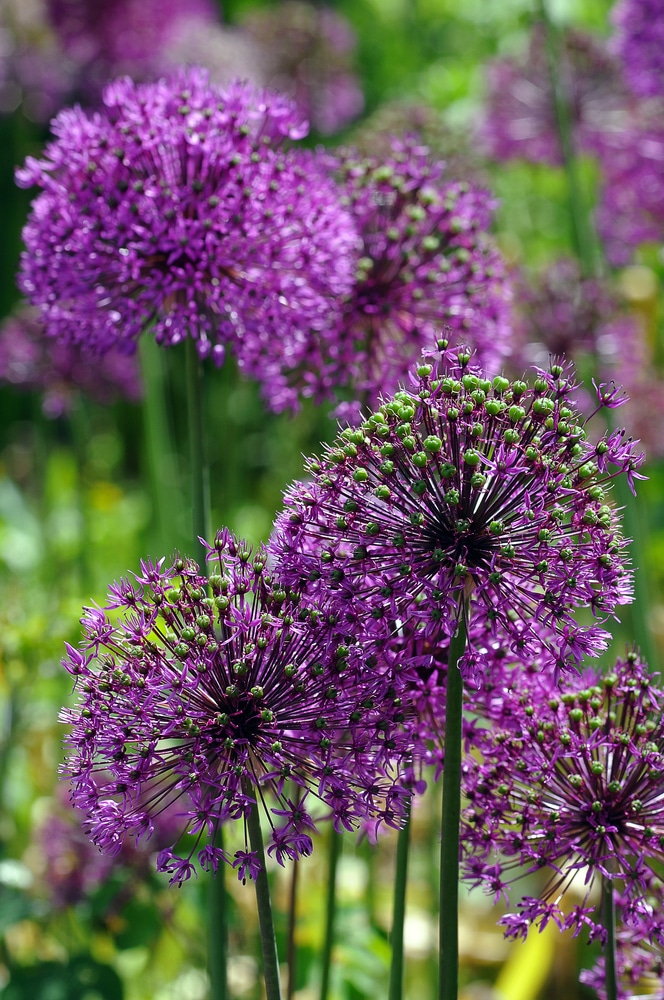
This showy yet hardy perennial will also make you look like a seasoned gardener because people wrongly assume it’s difficult to grow.
See – I wasn’t kidding when I told you these flowers prove their value!
Now that you know why this low-maintenance perennial is so special, let’s get into the details of how to grow alliums in your garden!
How To Plant and Grow Alliums
If you live in zones 3 to 9 and have space in your garden for a full-sun plant, then you can successfully grow alliums yourself.
The best time to plant allium bulbs is in the Fall before your zone’s first frost date.
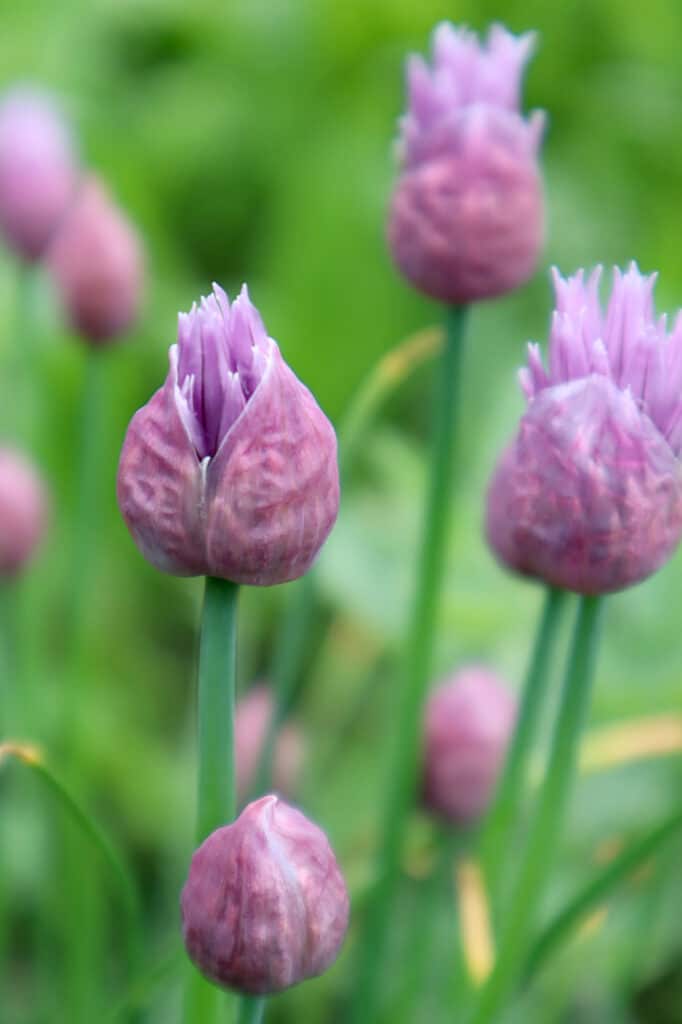
This will give them plenty of time to establish their roots so that they can safely make it through the winter season. (If you don’t know your growing zone’s first frost date, you can look it up here).
You’ll want to start off with healthy, quality bulbs.
TIP: You should purchase a few varieties with different blooming times. This way, you’ll have alliums blooming in your garden throughout the entire season. This little gardening secret holds true for other bulbs and perennials, too!
A few popular varieties include Allium aflatunense, Allium stipitatum, Allium senescens subsp. montanum var. Glaucum, and Giant Alliums.
Next, find a spot in your garden that gets full sun – this is very important.
Alliums need plenty of sunlight in order to grow tall and produce their large round blooms. Planting them in part shade will hinder its growth.
Soil Needs of Alliums
Use quality garden soil that is well-drained. Well-drained means you shouldn’t plant them in a spot that is prone to puddles when you water or when it rains.
Why? Similar to tulips or peonies, allium bulbs are susceptible to rotting if planted in soil that is overly moist, so beware of over-watering.
Whenever you plant bulbs, you should first loosen the soil with a garden tool because it’ll be easier for your roots to grow and gather nutrients.
You can mix a little bulb fertilizer into the soil, too, to help strengthen the bulb.
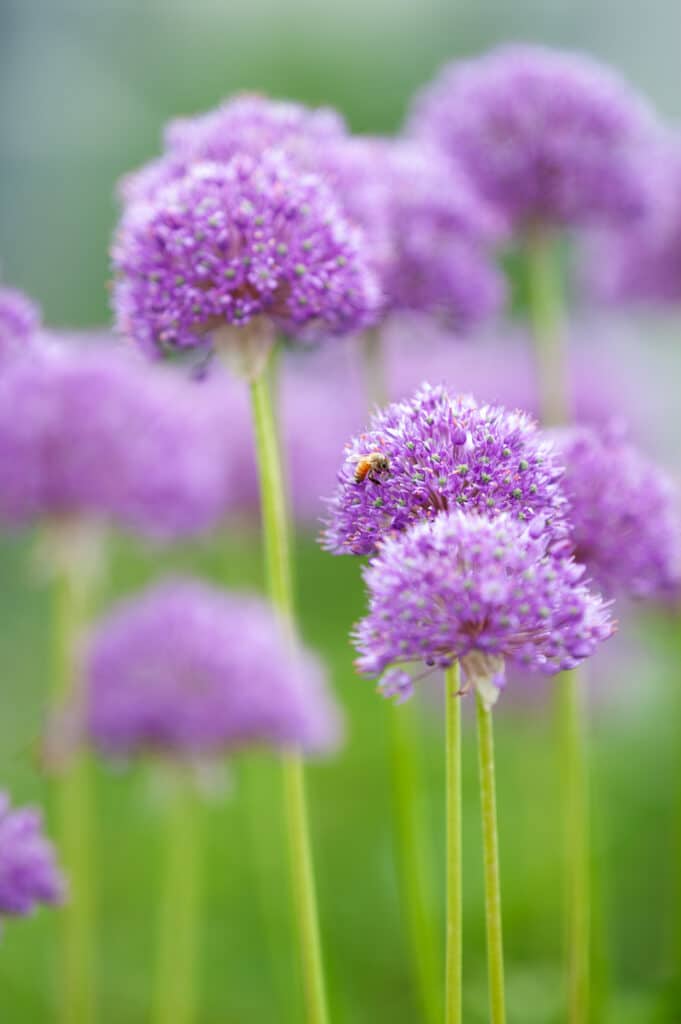
When you’re ready to plant the bulb, dig a hole that’s large enough to accommodate the entire bulb, plus a few inches deeper and wider.
This will usually be at least 6-8 inches deep.
Always give your bulbs enough space between each other to prevent their roots from intertwining.
If you want your alliums to grow closer together, plant them about 10 centimeters apart.
You can plant several bulbs in the same area if you do it this way, creating a stunning, en-masse look.
If you want them scattered throughout a particular area, simply plant the bulbs several inches away from each other.
Planting them together, however, will give better visual appeal.
TIP: Plant all of your bulbs the same depth so that they grow and bloom at the same time.
How to Water Alliums
Once you place the bulbs in the earth, cover the hole with garden soil, and water deeply. After the first watering, you can water regularly just to keep the soil from drying out.
Remember not to over-water, however.
Once you plant your bulbs in the Fall, the waiting game beings!
The roots of your bulbs will begin to strengthen in the Fall and you will begin to see growth in early Spring.
If you planted your alliums deep enough (6-8 inches), they’ll come back year after year.
Alliums are actually famous for growing taller and producing bigger blooms as the years pass!
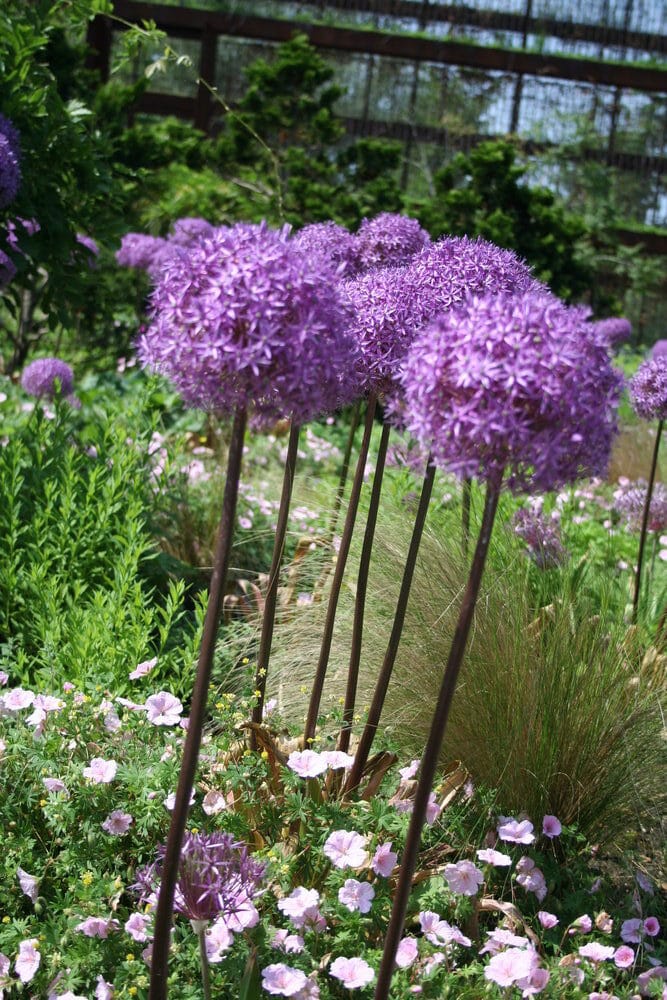
How to Prune Alliums
There’s no need to prune or deadhead alliums. The reason being is simple.
If you cut off their brown petals and spent blooms, you’ll kill the plant’s chance of creating next year’s blooms, which will leave you with an unproductive plant next Spring.
Simply let your alliums die back naturally – it’s better for the plant and it’ll give your garden some fall and winter interest, too.
Once the foliage dies back, you can trim the stem down.
That’s it! That’s everything you need to know about planting and growing alliums.
All this low-maintenance perennial really needs is a sunny spot, good soil, and some moisture!
If you provide it with what it needs, this plant will show off in your garden for years to come!